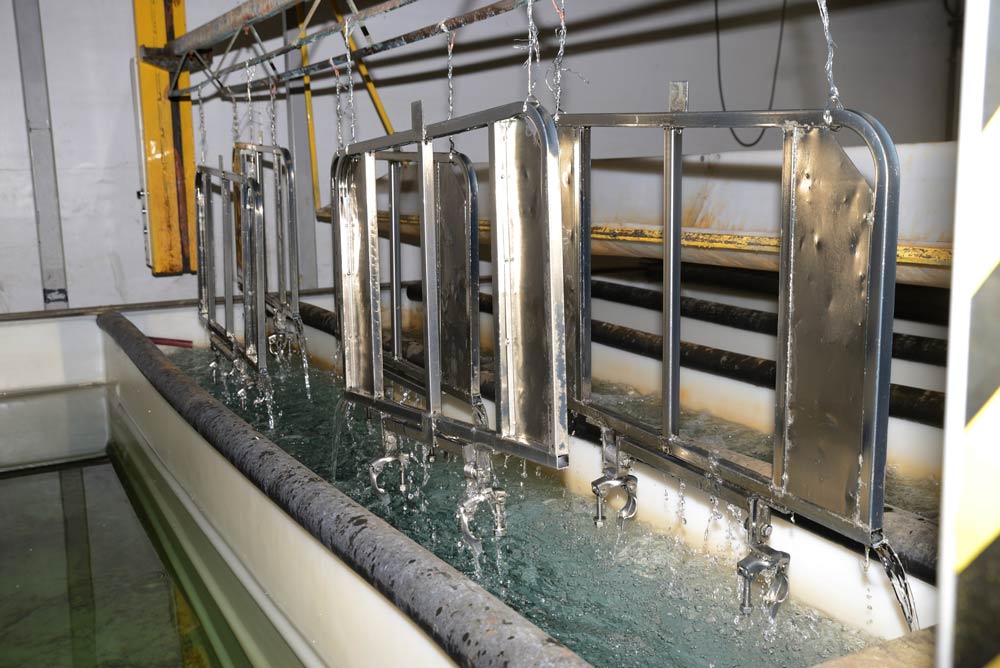Electroplating has broad industrial applications, making it one of the most important processes available to manufacturers. Whether the goal is to prevent corrosion or enhance an item’s visual appeal, electroplating, which involves adding a thin layer of metal to another type of metal, makes it possible. Companies use electroplating to reduce friction, conduct electricity, prevent radiation damage, and inhibit rust formation.
To maximize the benefits of electroplating, it’s important to choose the right metal. Learn why cadmium is such a popular choice for manufacturers.
The Advantages of Cadmium Electroplating
The electroplating process involves connecting a plating metal and another metal to a power source. Both materials are submerged in an electrolyte solution, causing metal atoms to dissolve. As the atoms dissolve, the plating metal binds to the other metal. Cadmium is an excellent choice as a plating metal due to its high level of electrical conductivity.
Cadmium also provides a smooth coating and resists corrosion, making it ideal for electroplating. One reason manufacturers choose cadmium as a plating material is because it offers galvanic protection. When applied to metals with lower levels of electrochemical activity, cadmium acts as a sacrificial coating, causing it to corrode preferentially to the base metal. This protects the base metal from damage, extending its lifespan.
Cadmium also produces a stable oxide layer, creating a durable barrier against water, salt, and corrosive chemicals. In addition to corrosion resistance, cadmium offers these benefits:
- High lubricity: Lubricity refers to a material’s ability to reduce friction. Cadmium offers a high level of lubricity, making it ideal for industrial equipment with many moving parts.
- Solderability: Cadmium has a high level of solderability, which means it’s easy to solder to other metals. If you rely on soldering, cadmium is a better choice than metals with lower levels of solderability.
- Low electrical resistance: Electrical resistance impedes the flow of electricity, while conductivity allows electrical current to flow freely. Cadmium has a low level of electrical resistance, making it ideal for industrial applications.
Which Cadmium for Your Needs?
Cadmium comes in several forms, so it’s important to choose one based on specific needs. If you’re working with cast iron, steel, copper, or powdered metal, consider using cadmium anode, which acts as a sacrificial coating. As noted previously, sacrificial corrosion protects base metals from damage, increasing their durability. Cadmium metal is ideal for metal plating, as well as the production of electrical conductors and batteries. Finally, cadmium wire resists fatigue and has a low coefficient of friction, making it a popular choice for electroplating.
Purity is an important consideration, especially if your company produces semiconductors or electronics. Manufacturers use high-purity cadmium to produce photovoltaic cells for solar panels, diodes, and semiconductors. High-purity cadmium also plays an important role in the nuclear industry, as it’s used to make control rods and radiation shielding for nuclear reactors. Automotive companies even use cadmium to improve the appearance of vehicle parts.
Maximizing Electroplating Efficiency With Cadmium
Cadmium has many desirable properties, including low electrical resistance, high corrosion resistance, and the ability to act as a sacrificial coating, making it ideal for electroplating.
Looking to incorporate electroplating for your next project? Let Belmont Metals provide you with cadmium electroplating. Reach out to our team today.

